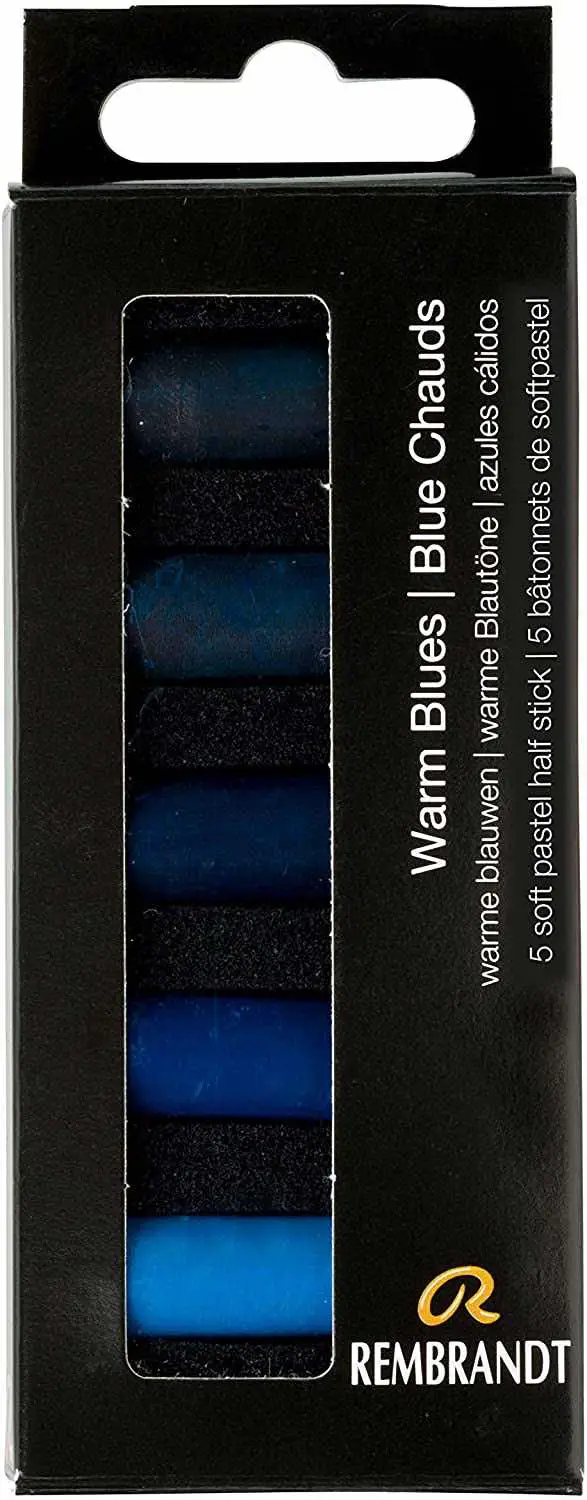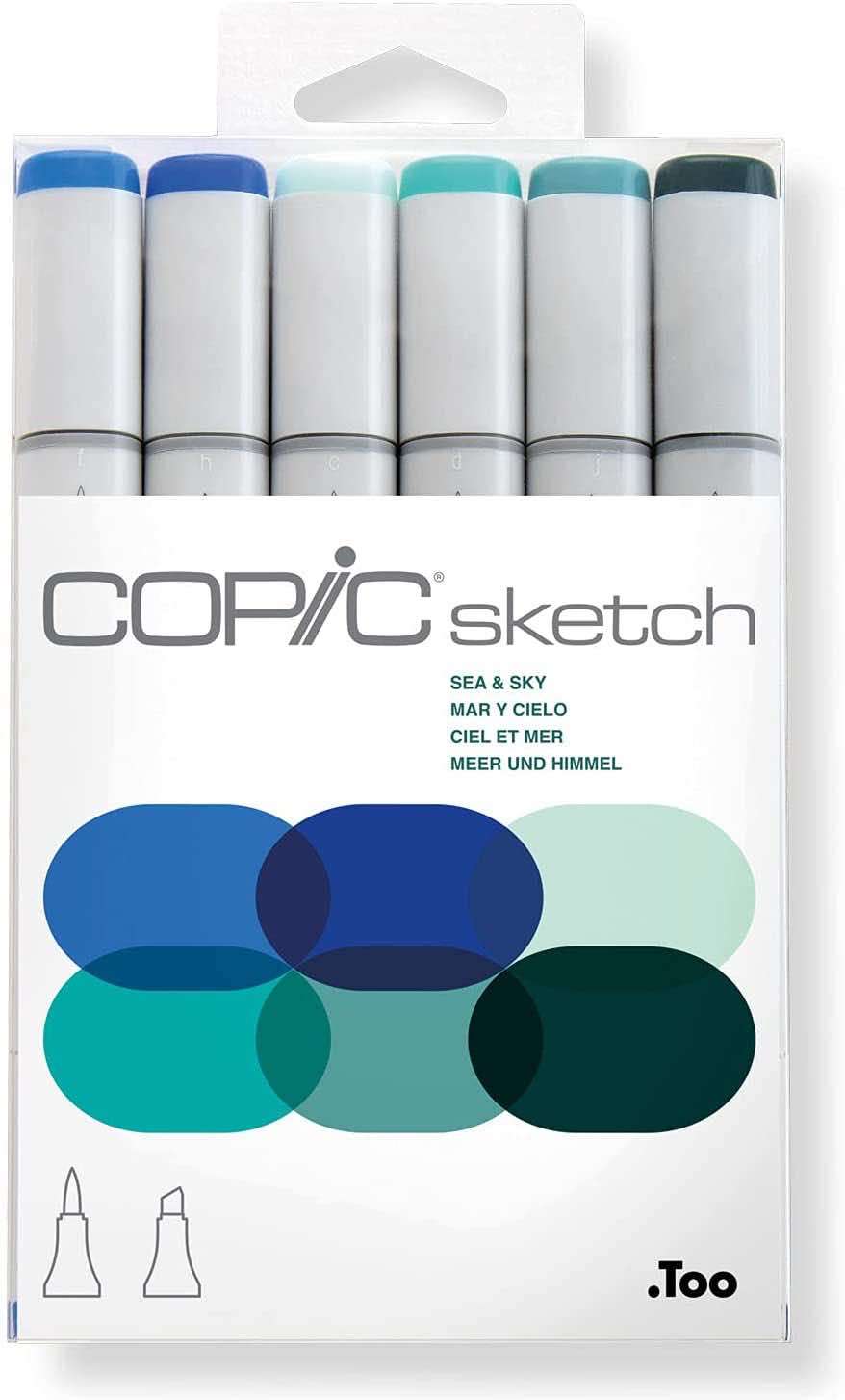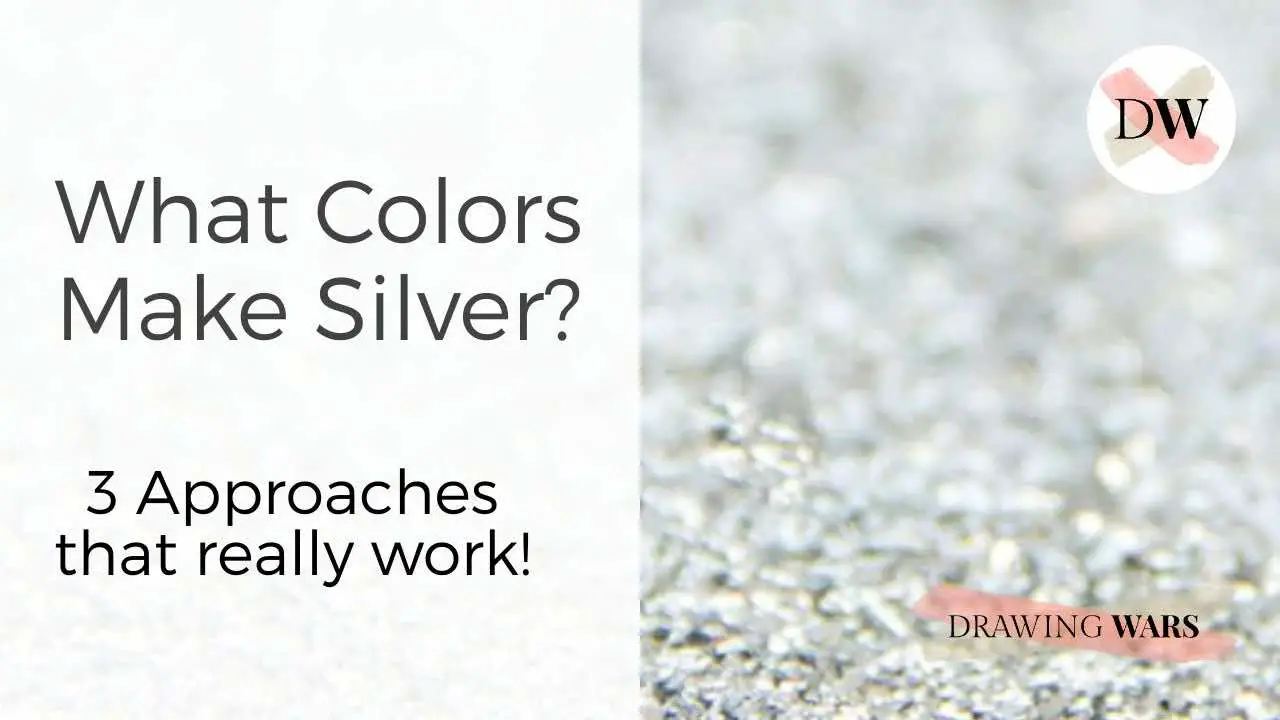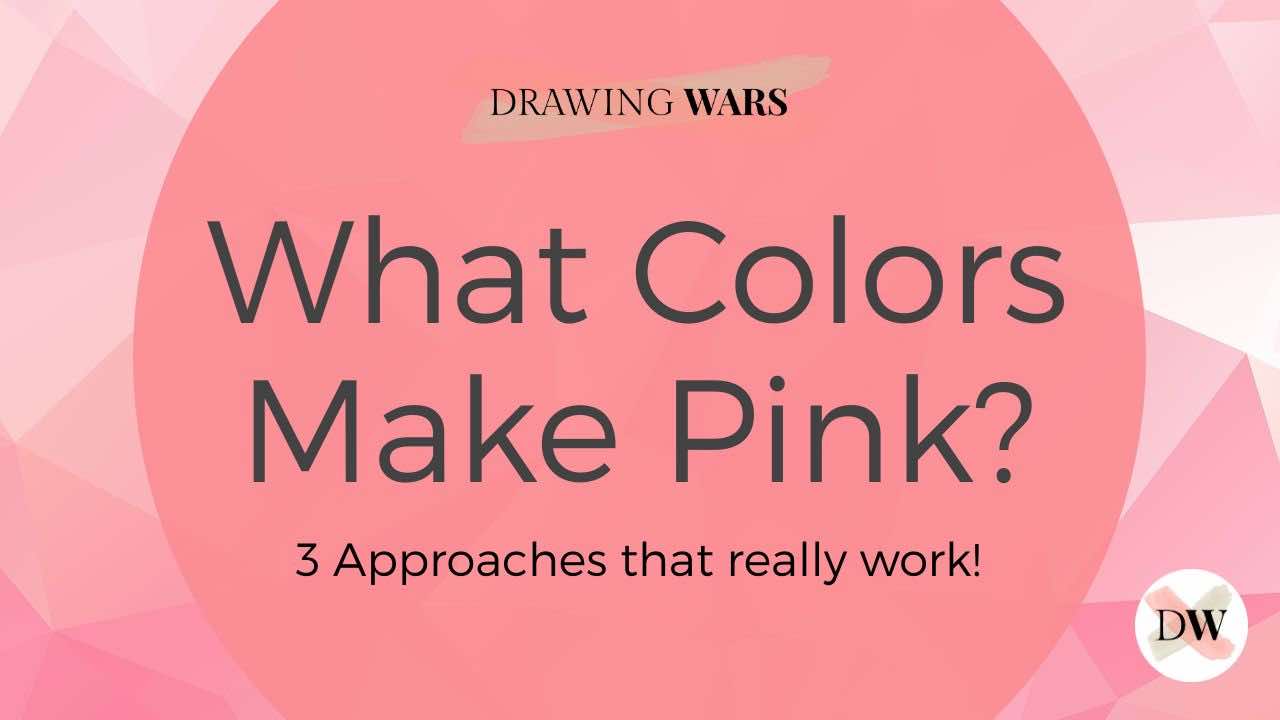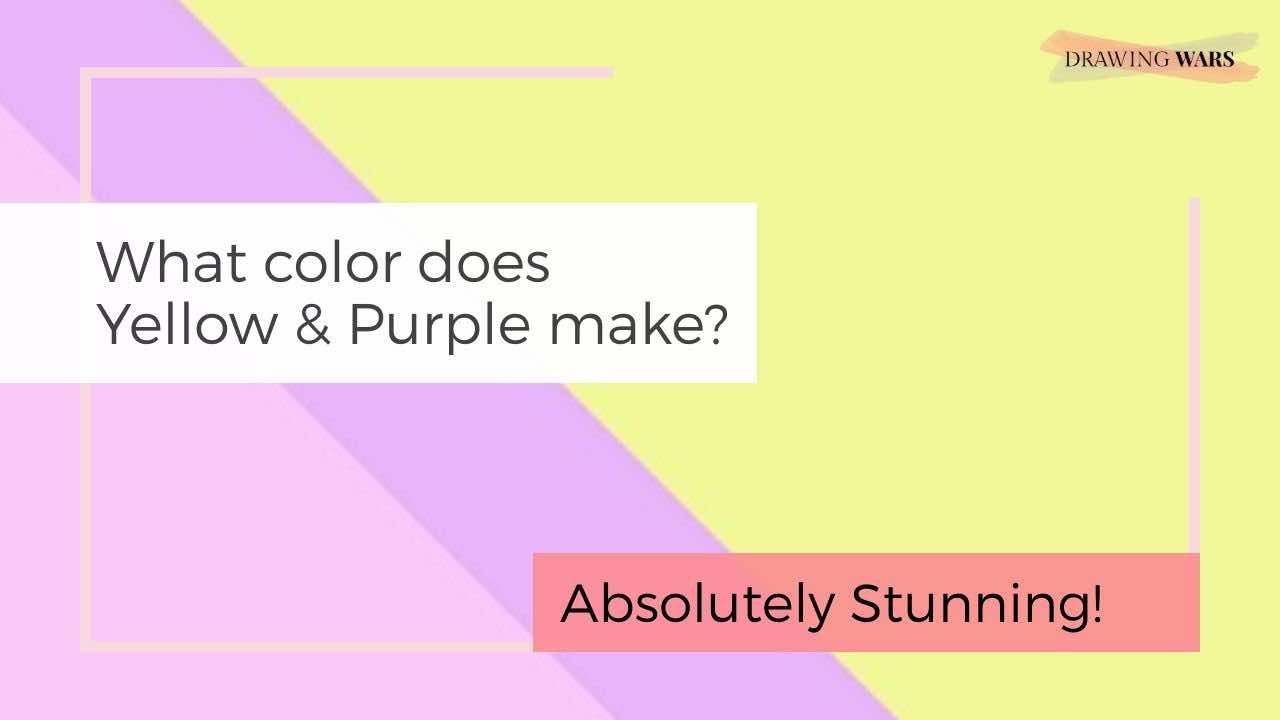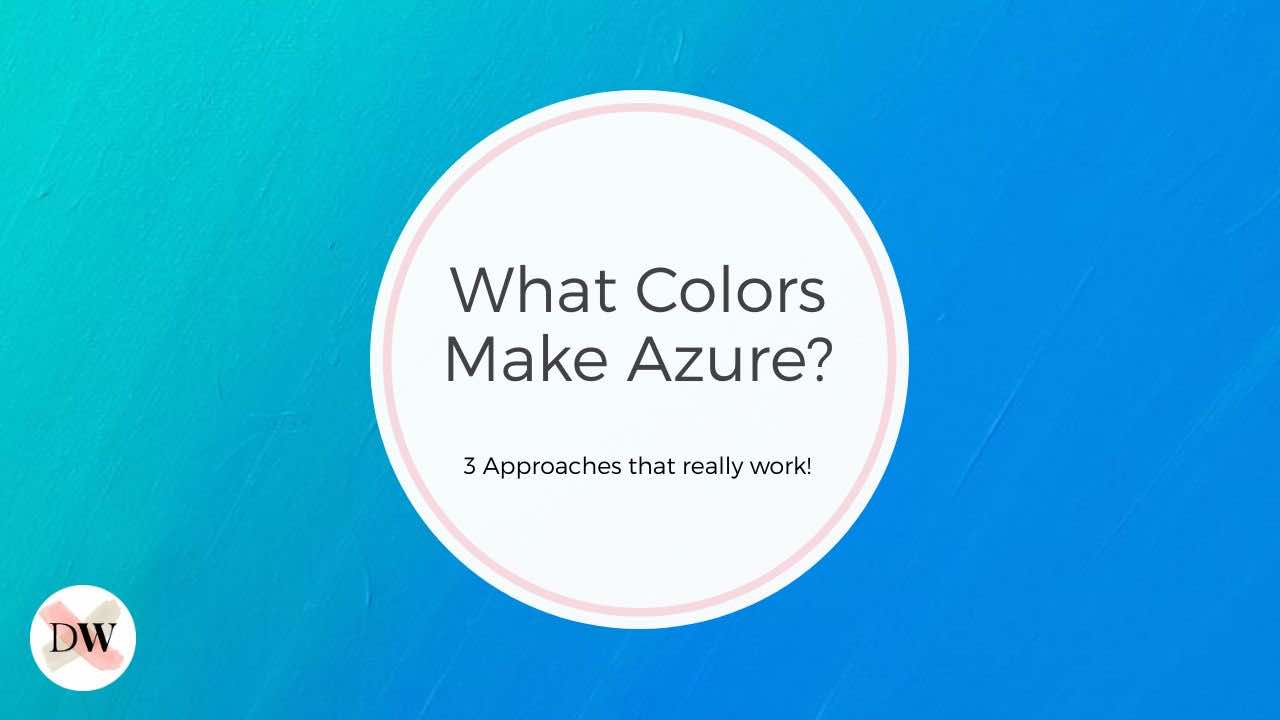
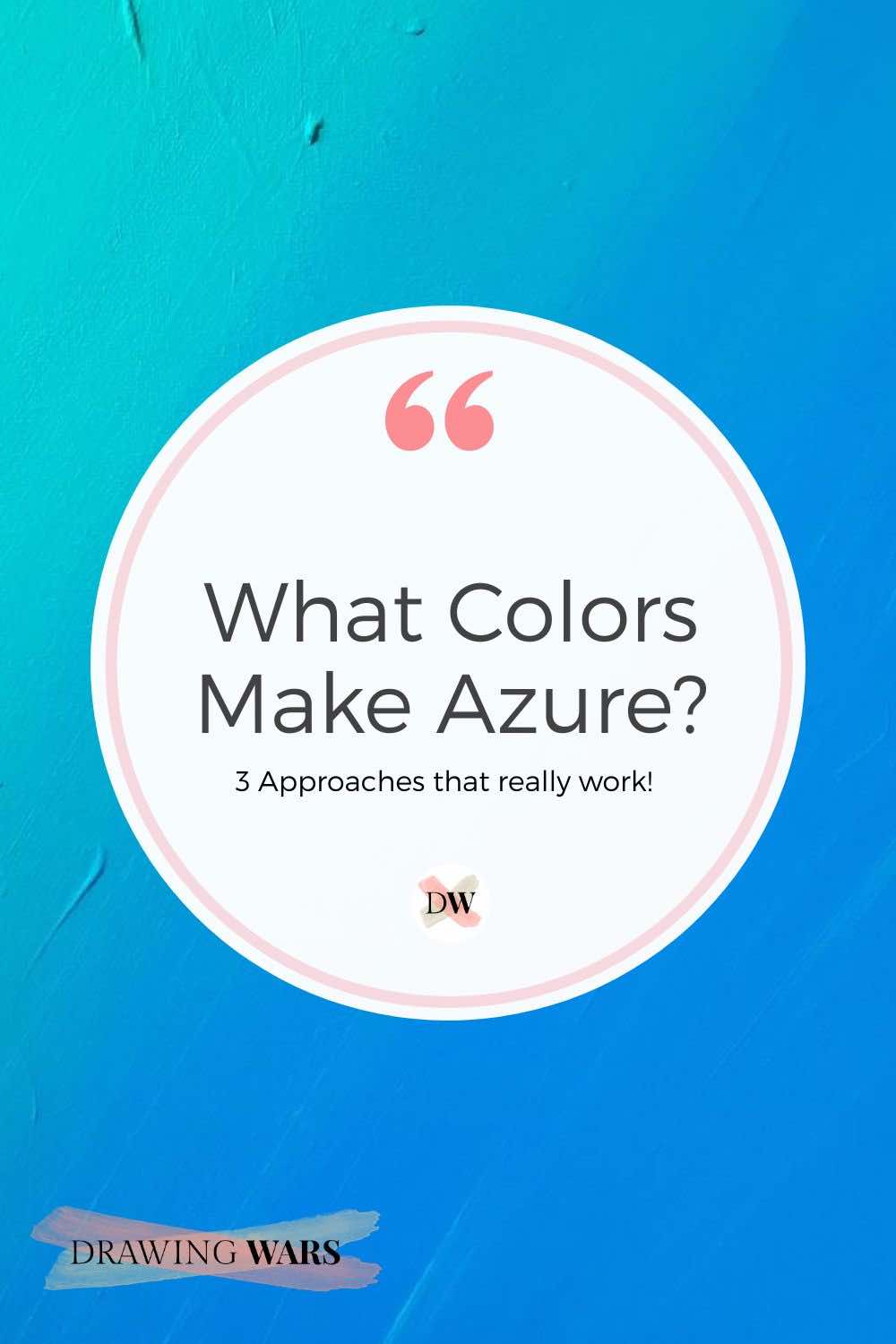
Azure: An Introduction
Are you a fan of cool colors? For us, blues and greens are all-time favorites because of their tranquil effects. Especially blue, since it reminds us of the open bright sky and the vast ocean. And that is exactly what the azure blue hue looks like. But while we know about blue, which is a primary color - what makes the azure hue different? And how can we create this stunning color via color mixing? Here’s the answer!
Azure is a blue hue that consists of blue and white, with a tinge of purple in it. In appearance, it looks brighter than blue and similar to cyan. It could be made easily by mixing green and blue to create cyan, and by adding a hint of purple in it.
What type of color is azure?
Azure is a blue hue that looks very deep and has tranquil effects.

Azure is a bluish color that is primarily a mix of blue and cyan, with a hint of purple.
By that definition, azure is a tertiary color. A color is known as tertiary if it is a mix of one primary color and one secondary color. However, it is a variant of blue and therefore, by nature, its cool and relaxing to the eyes.
On the other hand, cyan actually has a hint of green. And green is a secondary color made up of the two primary colors blue and yellow. Therefore, azure has yellow in it, although neither yellow or purple are apparent because the ywllos is blended well into the green and the purple is almost only optional to mix into it.
The 3 Approaches to Create Azure by Color Mixing
Since azure is a hue of a primary color, the main color you would be needing is blue.
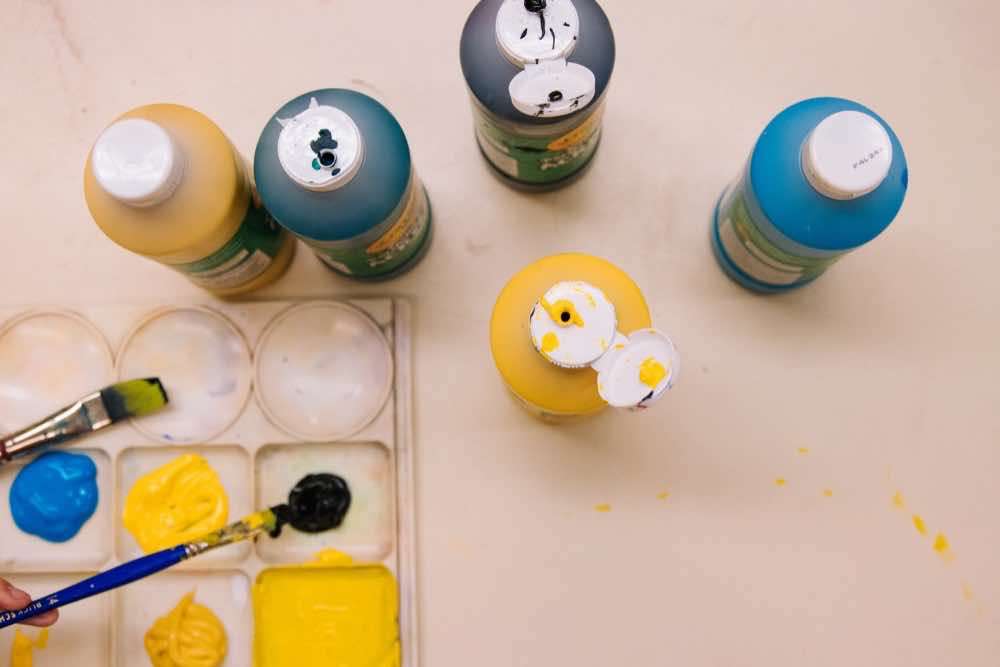
1. Mix blue and green
While azure looks like a blue, it has a tinge of green in it.
Mixing blue and green creates a cyan tone. If you add more blue to it, you will get a color that is close to azure. It’s best to opt for blue-violet, since it has an undertone of purple in it.
PRO-TIP
create your own green
Green is a secondary color. It is a mix of yellow and blue, so if you don't use green directly in the mix, you will have control over the amount of yellow and blue that goes into creating azure.
2. Mixing red and blue to get a purple
How about creating your own purple?
Since azure also has a hint of purple in it, you could create such a hue on your own. Creating purple will give you the freedom and control over how much red and blue goes into the mix. You can also use this step of mixing your own purple if you want an azure hue with a red tint to it.
PRO-TIP
the purple is barely visible
The main azure hue looks bright blue, with hardly any purple visible. Although experts claim that azure has violet undertones, the color is barely visible. So if you're new to color mixing, you can skip adding purple altogether.
3. Mix yellow directly into blue
If you don't want to add green directly, mix your own green hue.
To get a wider range of hues, you can vary the proportions of blue and yellow every time you mix.
Making adjustments to get the right Azure hue
You can always adjust the temperature and brightness of azure.
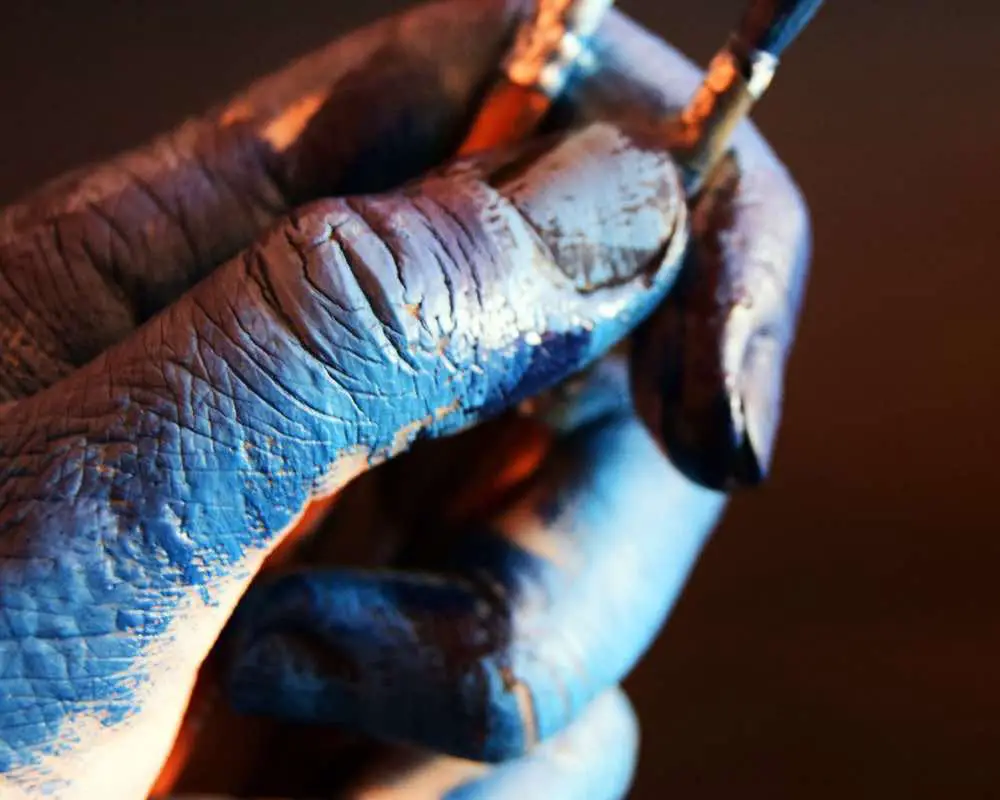
What if you want to make the azure hue look warmer or cooler? And what if you want to make it look brighter or darker? Well, you can make these adjustments easily once you’re done with the color mixing part.
1. Adjusting the color temperature of Azure
If you wish, you can make the azure color appear warmer!
By adding more yellow to the azure mix, it will appear warmer.
Azure is made up of blue and green. If we think about green, it is a mix of yellow and blue. Where blue is a cool color, and yellow is a warm color. So according to the color theory, if you add more yellow to the mix, you’ll end up with a warmer azure and if you add more blue to the mix, the azure will get cooler.
Point to remember
adding more yellow
By adding more yellow, the azure color would lean towards looking like green. So it's best to keep the amount as little as you can while color mixing. Keeping it subtle will allow the for change in temperature while maintaining the color.
2. Adjusting the tonal value of azure
Deeper and darker azure tones reflect the depth of the oceans.
Do you want a deeper and darker azure? Simply add some black to it and if that sounds too intense, you can just add some grey to the mix and get a mid-range value for azure color. Alternatively, you could also use complementary colors to create a dark azure color.
On the other hand, you can simply add white to create a brighter and lighter azure, that is, a ‘tint’ of it.
PRO-TIP
using complementary colors
If your azure has more blue in it, you can add orange (the complementary color of blue) to create a darker shade. If it has more yellow in it, you can add purple (the complementary color of yellow) to create a darker shade.
Making Azure across different painting media
The texture of painting media is different, so color mixing can vary too!
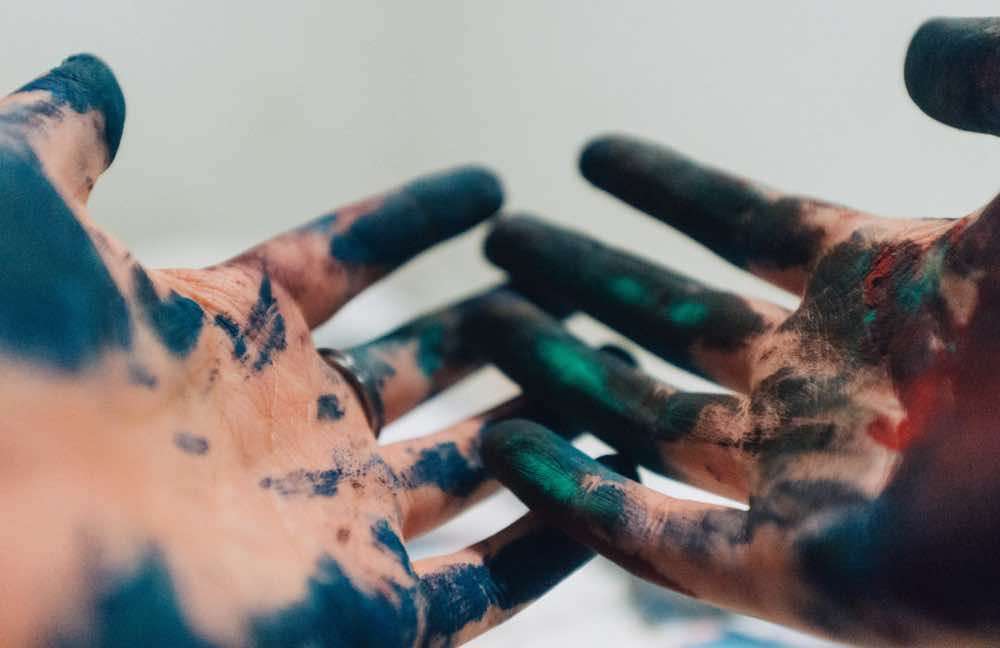
Let’s go through creating azure in some of the most common painting media.
Mixing azure in acrylic paints
The blue color available in the most basic acrylic paint kit is bright. To make an azure color directly, you can simply add some bright yellow to it. But it’s better to have a green separately because acrylic paints dry very fast and thus, you need to be super fast with the color mixing.
Mixing azure in oil paints
Blending in oil paints is relatively easier, compared to oil paints. So you can mix the blue and green directly on the surface. Another way to create azure in oil paints is to mix blue and yellow on the surface and get a variety of blues and greens for an illusionary effect. But if you want to get only the perfect azure, we recommend you mix the colors on a palette instead.
Mixing azure in watercolor paints
** Some of the most common blue hues in a watercolor paint set are cobalt blue, ultramarine blue, and prussian blue. If you have a blue-green in your watercolor palette, you can simply add any bright blue color to the blue-green hue to get azure by color mixing.
If you want to give a shot at drawing instead of painting, we highly recommend getting this set of pastels!
Rembrandt Set of 5 Half-Stick Pastels (Warm Blue)
Combine these 5 soft pastels together in any monochromatic pastel drawing or painting, or for creating moving oceans and seas in artworks.
Don’t like using dry media and the dust that comes with pastels? How about trying this set of awesome blue sketch markers instead?
Copic Alcohol Sketch Markers (Set of 6) - Blue
This set of 6 copic (sea and sky) sketch markers can be used to create blue monochromatic drawings and illustrations.
Fun Facts About Azure: Color Psychology
Azure, being a blue shade, makes us feel tranquil and calm!
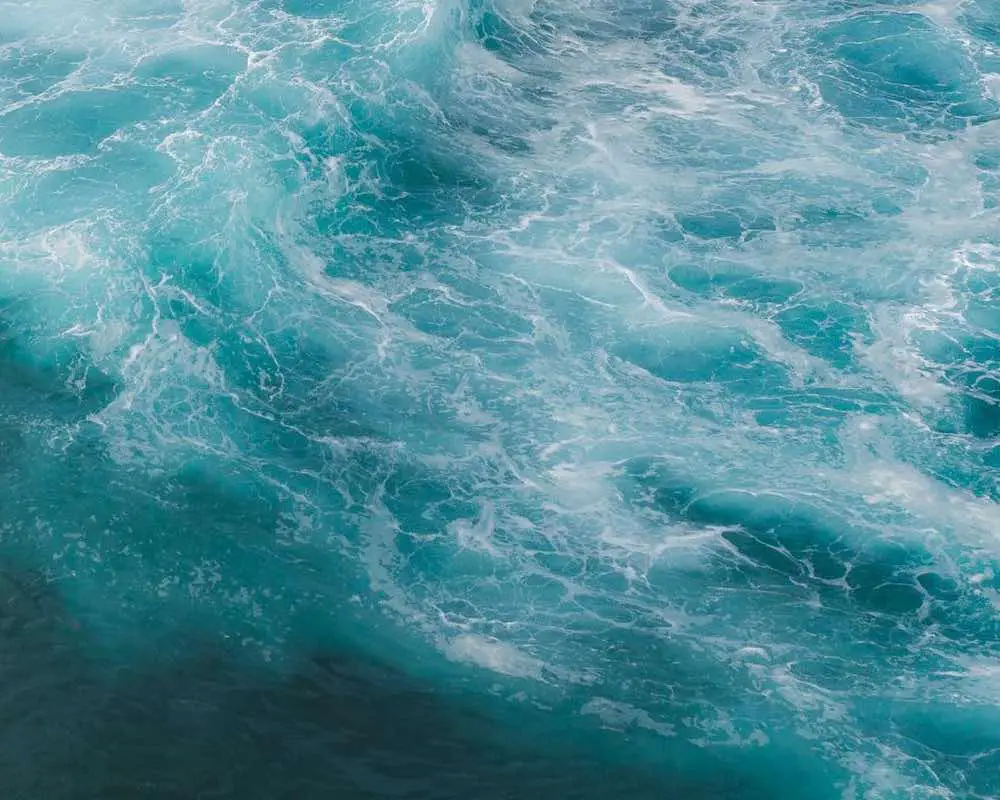
Any hue of blue evokes a calm feeling. Since azure is a blue hue, below are some of the positive and negative traits that it shares with the primary blue color. You can learn even more about the color psychology of blue here .
| Positive Traits | Negative Traits |
|---|---|
| Honesty | Conservative |
| Peace | Depressed |
| Serenity | Predictable |
| Commitment | Passive |
| Confidence |
Conclusion
And so, azure is a shade of blue. It may also have a purple or violet undertone, however it is not apparent. So when you’re creating azure, you can simple mix blue and green together. If you don’t have a green directly, you can create your own by mixing blue and yellow. To alter the color temperature of azure, you can add more yellow to the green you’re adding to the mix. Another way to do this is to add more yellow directly to the blue to get a blue-green first, and then add blue to the mix to make the azure hue bright. Since azure is blue in nature, it evokes feelings of tranquility.
If you’re fascinated with colors, we would recommend you read this post on three approaches to making silver color !
What Colors Make Silver? 3 Approaches that really work!
If you're a fan of metallic colors, we bet silver must be in your list of favorites. Here's how to create your own silver by color mixing!

By Jimena & Iñigo
The Navarro-Rubios
My husband and I are learning how to draw and paint. We wanted to share this learning process with the world and have fun! That's why we created this blog. We'll have drawing contests every week and you'll decide who won that week! Follow along and learn with us!

Jimena & Iñigo
The Navarro-Rubios
My husband and I are learning how to draw and paint. We wanted to share this learning process with the world and have fun! That's why we created this blog. We'll have drawing contests every week and you'll decide who won that week! Follow along and learn with us!
